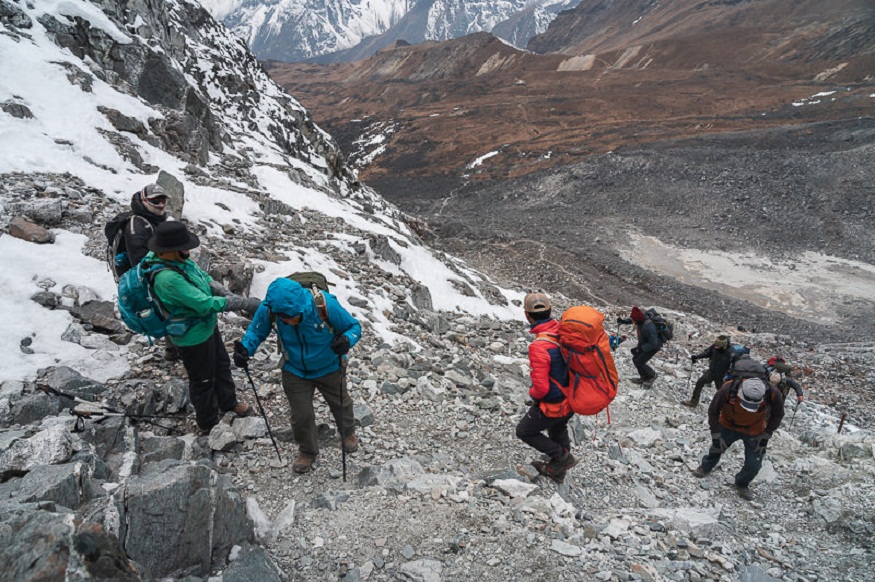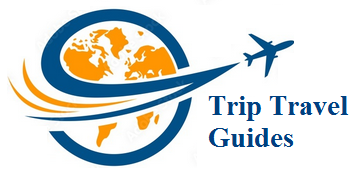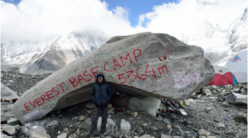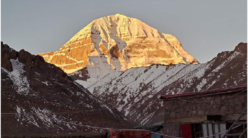
This article is about the Everest Three High Passes Trek. But this trek is no walk in the park. Known for being one of the toughest trails in the entire Everest region, it tests proper preparation and a well-tested gut. Having the guidance of a Sherpa on this hike is essential. Sherpas carry a wealth of experience with them, but they also know the nuances of the route, the typical weather patterns, and the high-altitude atmosphere.
Everest Three Pass Trek Accommodation The journey passes over Kongma La, Cho La, and Renjo La, three challenging high-altitude passes. Physical conditioning is key, as trekkers need to build up to long days of trekking in the afternoons and steep ascents every morning to cross these passes. Condition the body for the physicality of the trip through cardiovascular training, strength-gaining activities, and backpack practice.
Besides physical training, acclimatization is another aspect trekkers should train for. Becoming rapid in gaining altitude can cause altitude sickness; this can be deadly. You will need to take rest days en route, especially in Namche Bazaar and Dingboche, to give the body a chance to acclimatize. A Sherpa guide will make certain that the pace is manageable, slowing it down if necessary, so that you do not overexert and will be given time to acclimatize.
Another important part of preparation is bringing the right gear. 646; essentials are good trekking boots, layers of clothing to accommodate a range of temperatures, a sleeping bag rated for high altitude, and trekking poles for balance and steadiness. Basic nutrition and hydration, plus a first-aid kit, are essential to keeping your energy up and your spirits high on the trail.
Everest Three High Passes Trek is, ultimately, much more than a physical challenge: it’s a chance to also immerse yourself in the beauty of the Himalayas and the rich Sherpa culture and climb every mountain as the saying goes. With proper planning and reputable Sherpa guidance, trekkers will have a safe, exhilarating, and breathtaking experience in one of the most stunning corners of our planet.
Overview of the Everest Three High Passes Trek
An epic adventure, the Everest Three High Passes Trek leads trekkers through the compact, yet grand nature of the Everest region of Nepal. From this route, trekkers will climb to three high-altitude passes: Kongma La, Cho La, and Renjo La, all above 5,000 meters which distinguish the high-altitude Everest Base Camp trek from the traditional one. It takes trekkers 18 to 20 days, and challenges them with steep climbs, rocky ground, and fast gain in altitude, making for an extremely difficult and rewarding experience. Some of the notable places trekkers come across on the way include Namche Bazaar, Everest Base Camp, Gokyo Lakes, and the stunning viewpoints of Kala Patthar. This track doesn’t just test the body but also immerses a person deep into a different culture of meeting Sherpa villages, antiquated monasteries, and a local lifestyle. The trek is open for experienced trekkers however need good preparation, endurance, and knowledge of high-altitude trek to overcome the hindrances. The Everest Three High Passes Trek provides trekkers with stunning, large-scale views of Mount Everest, Lhotse, Makalu, and Cho Oyu after crossing these high passes, and is an incredible challenge for those up for it.
Know the Role of Sherpas in the Trek
Everest Three Pass Trek Packing List Sherpas are an indispensable part of both the success and safety of the Everest Three High Passes Trek. Aid climbing Mount Everest with highly experienced guides, the experts are local of Ladakh whom you will find highly helpful through out the journey. They are the best at navigating the mountainous terrain, knowing the specifics of its brief landscape, weather angle, and dangers. Local knowledge and reading the mountains are key, particularly crossing the high-altitude passes where conditions can be changeable. In addition to serving as guides, Sherpas assist with logistics, carry equipment and manage the pace of the trek to facilitate safe and gradual acclimatization. They also play a crucial role in monitoring the health of trekkers, watching for and recognizing signs of altitude sickness, and making sure that trekkers are drinking and eating enough on the trek. Sherpas have a deep cultural relationship with the Everest region, enriching the journey with unique insights into the traditions, spirituality, and lifestyle of the local people. Along with their guidance responsibilities, Sherpas also often set up the camp, cook meals and make sure that all supplies are in hand. More than just guides, they are safety measures and sources of information about the Everest area, making them integral to the Himalayas trip.
Pre-Trek Essentials We Need to Do First
Altitude sickness is a significant concern due to the trek’s high elevation, and acclimatization is essential to adjust to the thin air. When preparing, one of the first things that needs to be done is to get yourself fit. As this trek is quite demanding, it is a good idea to get out and do some cardiovascular exercise to help get you in shape for the hike, whether this be hiking, running or cycling, and strength training for the legs and core will also be beneficial. Also, trekkers must do practice walks with a weighted backpack to get used to the trek conditions. The other major aspect of prepping is mental preparedness. This is a physically challenging and long trek, which means you have to toughen yourself up mentally to combat the mental fatigue from all the long days of trekking. To avoid altitude sickness, you should gradually gain altitude, acclimatization is a major part of the trek. Before doing the Everest Three High Passes Trek, it’s best to get acclimatized at events above 3,000 meters. Logistic preparation: You need to get the necessary permits, the TIMS (Trekkers’ Information Management System) card, and the Sagarmatha National Park entry permit. It’s also a good idea to consider hiring a local guide or Sherpa for safety end gain cultural insight of the region. With the proper preparation, a successful and safe trek can be ensured.
Three High Passes Trek Packing List
When packing for the Everest base Camp Three High Passes Trek, you need to be very mindful of the high-altitude conditions and diverse conditions during the journey. Packing list: We will also need a nice and organized packing list to make sure we have everything we need without overpacking. Pack the essentials: layers of lightweight, moisture-wicking clothing for trekking (you’ll want to invest in a good base layer), a warm-down jacket, a waterproof outer layer, thermal gloves , and socks for varying temperatures. Trekking boots must be durable, waterproof, and comfortable for the rocky and icy terrain. A warm sleeping bag (to below −5 °C); it gets cold at night, especially at 4,000 meters and above. Packing the appropriate accessories is just as important as packing your clothes. A well-made backpack, complete with a rain cover, will accommodate your gear, and a daypack for shorter excursions is helpful. Use trekking poles to cross the uneven land and make sure to pack a water purification system, such as iodine tablets or a filtration system. You will also need basic first aid supplies, a headlamp with extra batteries, and a camera to capture the breathtaking views. For food, take along items that are high in calories, like nuts, chocolate, and granola bars. Lastly, do not forget essential documents like trekking permits, passports, and insurance details. So, you need to ensure you have a safe and comfortable journey by utilizing a comprehensive packing list for high-altitude trekkers.
Training Your Body and Mind
So, to sum things up, physical and mental preparation are the two most important things before you complete the Everest Three High Passes Trek. As the trek entails crossing three 5000+m passes on long days of trekking, trekkers should focus on becoming physically fit in the months beforehand. Cardiovascular fitness is essential to keep your stamina up on the hike. Regular aerobic exercise, whether through hiking, running, cycling, or other activities, will increase your endurance, and strength training targeting the legs, core, and upper body will help improve your overall fitness and make it easier to carry a backpack for long distances. Also, train for high-altitude trekking. It can also help prepare the body for the lower oxygen levels encountered when training at higher altitudes or altitude simulation, if available. Mental preparation is on par with physical preparation. The trek will test trekkers on both the physical and mental challenges. A positive mindset, mental strength training through self-affirmations, and preparation for the physical and mental strain of long trekking days can all go a long way in determining the success of the trek. We should set realistic targets for each day, and be flexible enough to ensure that we can deal with a bad day or unexpected delay. A trekker can even use visualization techniques and mindfulness to keep his/her focus and calm even during extreme situations. A Trek on Everest Three High Passes Trek navigates the physical and emotional challenges with confidence through adequate physical training and mental preparation.
Some Helpful Hints for Acclimatization at High Altitude
Everest Three Pass Trek Trail As such, acclimatization is essential on the Everest Three High Passes Trek to prevent Acute Mountain Sickness (AMS) and maximize the safety and success of the trek. The trek consists of heavy elevation gains with all three passes being above 5,000 meters which means a gradual acclimatization process is essential for the body to get accustomed to lower levels of oxygen. The first rule of acclimatization is to “climb high, sleep low.” In this case, trekkers are advised to spend a day walking to higher altitudes but sleep back at lower elevations, which helps the body acclimatize slowly. There are purposely built rest days as the acclimatization stops in Namche Bazaar and Dingboche in the itinerary, giving trekkers time to rest and recover before moving on. Taking it slow on the trail is also critical to avoiding altitude sickness since going up too fast raises the chances of experiencing symptoms like headache, nausea, and dizziness. Hydration is also key to acclimatization — consuming lots of water and avoiding alcohol or too much caffeine can help you maintain good circulation and oxygen levels. And at higher elevations, a good diet consisting of calorie-rich and nutritious foods to maintain energy is also needed.” If any symptoms of altitude sickness do manifest, it’s important to alert the guide and, if tagged, to descend to a lower altitude to avoid more serious complications. However, with proper acclimatization and close attention to one’s physical state, the Everest Three High Passes Trek can be done safely.
Trekking Itinerary Overview
The Everest Three Pass Trek Route is a multi-day journey that usually takes around 16 to 20 days, depending on group speed and acclimatization requirements. The trek starts with a flight to the mountain town of Lukla from Kathmandu and gradually makes its way to stunning Sherpa villages like Phakding, Namche Bazaar, and Dingboche. After acclimatization for a few days, the trek proceeds toward the first Pass as Kongma La then goes to Cho La and Renjo La. On the way, trekkers walk by such sights as Everest Base camp and the Gokyo Lakes, with stunning vistas of the Himalayas. Days of acclimatization are embedded into the itinerary to allow the body to adapt to the high altitudes, particularly in Namche Bazaar and Dingboche before climbing the higher passes. The last part of the hike includes a descent to Gokyo Valley, allowing one to peacefully contemplate the beautiful sights experienced. The route is designed to strike a proper balance between the thrill of traversing high passes in a short time and ensuring that rest days are not compromised, providing a challenging and fulfilling expedition for seasoned trekkers. Each step along the way is meticulously planned, enabling the trekkers to relish the experience while successfully mitigating the risks associated with endurance trekking at high altitudes.
Three High Passes Trek: Important Points
Arguably the most thrilling part of the Everest Three High Passes Trek is crossing the three high passes, Kongma La, Cho La, and Renjo La. This is rewarding, but as these are hard passes, it needs a lot of preparation. First, trekkers need to be physically fit enough to reach heights above 5,000 meters (16,404 feet) elevation. The steep slopes, rugged trails and occasionally icy conditions can make these passes dangerous. Trekking poles and tough shoes can secure stability. Weather is another important factor as high Himalaya weather can be unpredictable. They could be blocked by snowstorms or heavy winds, or receive travel warnings that render some terrains too dangerous to pass. Having the right gear like insulated clothing, a high-altitude sleeping bag, and sufficient food and water is critical.] Trekkers should also keep in mind their pace, they should take their time to minimize the chances of altitude sickness. Proper acclimatization is critical, so rest days are taken at key locations such as Namche Bazaar and Dingboche. Sherpa guides, despite being well-trained and experienced route attendees at high altitudes, navigate such passes providing the group actual route map and proper rate. In conclusion, crossing the three high passes is a physically challenging endeavor, but with careful planning and the right guidance, trekkers can triumph over these majestic trails.
Coming Across Roadblocks During the Journey
Everest Three Pass Trek Guide The Everest Three High Passes Trek is an incredibly thrilling adventure, pushing trekkers on all levels of physical, mental, and emotional experiences. The trek ascends to heights over 5,000 meters (16,404 feet), making altitude sickness one of the leading dangers. The body can suffer symptoms such as headache, nausea, and dizziness from the reduced oxygen levels, making acclimatization crucial. To stave this off as much as possible, it’s important to take rest days, stay well-hydrated, and ascend slowly. The second challenge is the diverse terrain, which includes steep ascents, rocky sections of the path, and icy areas of the hike, especially during the high passes such as the Kongma La and Cho La stages of the trail. Good trekking poles and footwear are crucial for maintaining balance and avoiding slips or injuries of any kind. Extreme weather, such as snowstorms and high winds, can make some sections of the trek difficult and dangerous. Trekkers should come equipped with warm and waterproof clothing and gear to withstand extreme temperatures. Longer days of hiking can also be physically exhausting, so pacing yourself and listening to your body is important. These issues require mental fortitude and, with the help of experienced Sherpa guides, can advise and assist with difficulties. Although you are the one going through the experience, the entire challenge of physical and emotional endurance eventually pays off as the trekkers are pushed beyond their comfort zones only to be greeted with the most amazing views and a great sense of achievement.
Safety and Emergency Protocols
A high-altitude trek through Nepal’s Himalayas, such as the Everest Three High Passes Trek, is an excursion where safety must come first, given that you will pass through high-altitude terrain characterized by rugged topography and erratic climate patterns. Altitude sickness is one of the major safety concerns – and it can hit anyone who goes to high altitudes too quickly. To minimize this risk, climbers need to obey the “climb high, sleep low” rule, where they go up during the day but come back down the mountain to sleep, allowing their body time to adapt. It is also important to stay hydrated and not overexert yourself because dehydration and fatigue can exacerbate the effects of altitude sickness. Trekking with experienced Sherpa guides is essential for safety, as they can spot early signs of altitude sickness and suggest if you need to adjust the trek’s pace or descend to a lower altitude. We also make sure to provide adequate safety gear to trekkers, including good shoes, warm clothing, and a first-aid kit. Protocols for evacuation in emergencies exist, with services to evacuate by helicopter in case of severe health issues. Trekkers should still have full travel insurance that covers high-altitude trekking and evacuation, though. Lastly, you should have a way to stay in touch, whether through satellite phones or other means, in case you are in an emergency. Following these precautions and guidelines, trekkers will be able to minimize the dangers and concentrate on enjoying the expedition in the Everest region.
Cultural Insights from the Sherpa Community
The Everest Three High Passes Trek is not only an action that is a high country but also a way to give back to the very people who make it happen: The Sherpa community. Sherpas, native to the Tibetan plateau, have lived in the Khumbu region for centuries, establishing a deep bond with the mountains. Their culture is heavily influenced by Buddhism and trekkers will cross many monasteries, stupas, and prayer flags along the way. Sherpas have a firm belief that mountains are sacred, and their many spiritual practices are intended to honor the deities who are said to live within the peaks. Walking through Sherpa villages gives trekkers a unique opportunity to glimpse a life that few other people experience in one of the poorest and most beautiful corners of the world. Sherpas are known for their hospitality, and many trekkers forge lasting friendships with their guides. The Sherpas are not just proficient in the mountains; they are excited to share their stories, traditions, and way of life. This link to the Sherpa community gives trekkers insights into the culture and spirituality of the region. From learning about traditional farming methods to understanding the significance of Buddhist rituals, trekkers can enrich their experience and gain a sense of the Sherpa people’s resilience and reverence for the natural world. This cultural exchange gives a deeper meaning to the physical challenges of the trek, which makes the Everest Three High Passes journey a unique physical and spiritual exploration.
Essential Advice for a Great Trek
Everest Three Pass Trek Fitness Tips for the Everest Three High Passes Trek: Preparation, Fitness Level, and Mental Fortitude Physical conditioning is ultimately first and foremost. The trek requires long days of hiking at high altitudes, so building stamina and strength prior to travel is key. Exercises that get the heart rate up like running and stair-climbing, weights, and practice hikes, including wearing a packed backpack, can prepare the body for the physical demands of the trek. Acclimatization is equally important. Take rest days at key points such as Namche Bazaar and Dingboche, to give your body time to acclimatize to the thin air and reduce the risk of altitude sickness. A voiceover explains the need for proper gear to maintain comfort and safety. Invest in good trekking boots, layered clothing, and a backpack that fits well. Do not forget a good sleeping bag, the nights at high altitudes can be very cold. This is especially true when it comes to staying hydrated and keeping a balanced diet during the hike. Then, by consuming high-energy foods in addition to drinking regular water, you can maintain your energy and minimize the dangers of altitude illness! So, it is essential to trek with experienced Sherpa guides who know the area, weather conditions, and safety procedures. Lastly, stay positive and be ready for physical and awe-striking beauty. There you have it, a step-by-step guide for crossing the Three High Passes, embrace the adventure go at your own pace, and indulge in your success; trekking the Three High Passes is a life-changing experience deep in the Himalayas.



